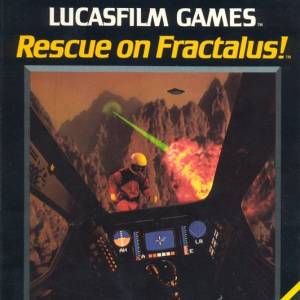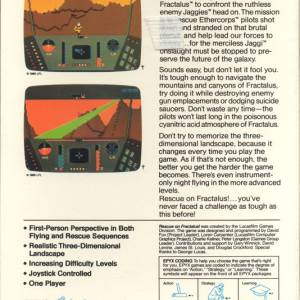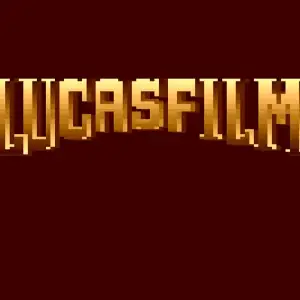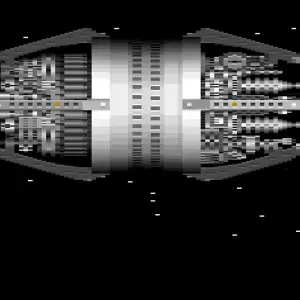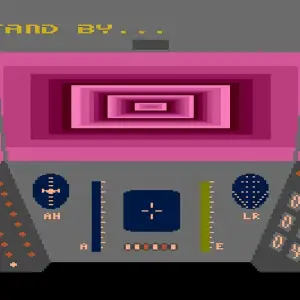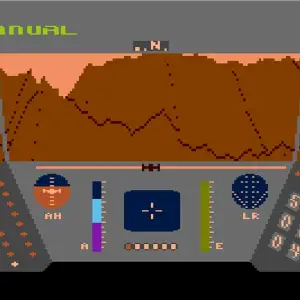Rescue on Fractalus! - A Milestone in 8-Bit Gaming for Atari XL/XE
| Release Information | |
|---|---|
| Release Date | 1985 |
| Publishers | EPYX |
| Download Game files |
Rescue on Fractalus! is one of the most groundbreaking games of the 8-bit era, redefining the possibilities of graphics and gameplay in video games. Released in 1985 by Lucasfilm Games and brought to the Atari XL/XE in 1987 by Atari Corporation, this title remains a classic that captivates retro-gaming enthusiasts and technology historians alike. Blending flight simulation, exploration, and moments of sheer terror, Rescue on Fractalus! created an unforgettable experience that left an indelible mark on the history of video games.
Origins and Creators
The game was developed by the Lucasfilm Games Computer Division, established in 1982 by George Lucas with a $1 million investment from Atari. The studio’s mission was to push the boundaries of technology and storytelling in gaming, and Rescue on Fractalus! was one of its earliest triumphs. The project was led by David Fox, who designed the gameplay and programmed key elements. Loren Carpenter, previously a member of Lucasfilm’s computer graphics division, crafted the revolutionary fractal engine that generated the rugged terrain of the planet Fractalus. Mastering the 6502 assembler in just weeks, Carpenter brought this cutting-edge technology to life. The game’s visuals were created by Douglas Crowford, Charlie Kellner, James St. Louis, and Gary Winnick, while Kellner and Peter Langston, the director of Lucasfilm Games Computer Division, composed the music and sound effects. A pivotal contribution came from George Lucas himself, who suggested the idea of disguised Jaggi aliens attacking the cockpit, injecting an element of surprise and horror that became iconic.
Initially titled Behind Jaggi Lines, the game referenced both the hostile Jaggi race and the “jagged” graphical lines (known as “jaggies”) common in early displays. While there were plans to set the game in the Star Wars universe, Lucas opted for an original story, granting the team greater creative freedom.
Gameplay and Innovations
In Rescue on Fractalus!, players assume the role of a pilot commanding the “Valkyrie” spacecraft, tasked with rescuing downed pilots on the surface of the alien planet Fractalus. The gameplay combines flight simulation with exploration, presented from a first-person cockpit perspective. Players navigate over fractal-generated terrain, using onboard instruments to locate rescue pods, all while dodging attacks from Jaggi anti-aircraft guns and contending with the planet’s dense, vision-obscuring atmosphere.
The game’s most memorable feature is the rescue sequence. After landing and opening the airlock, players hear the footsteps and breathing of an approaching pilot. But some of these “survivors” are disguised Jaggi aliens who launch a terrifying attack, attempting to smash the cockpit windshield. Inspired by George Lucas, this moment delivered shocks that left players—especially younger ones—stunned, a rarity in games of that era.
Technologically, Rescue on Fractalus! stood out for its use of fractal algorithms to create dynamic, three-dimensional landscapes on 8-bit hardware. At a time when most games relied on simple sprites and static backgrounds, the game’s rugged, ever-changing terrain felt almost alive. The sound, powered by the Atari’s POKEY chip, further enhanced immersion despite the hardware’s limitations.
Release and Reception
Rescue on Fractalus! debuted in 1985 across multiple platforms, including the Atari 400/800, Commodore 64, and Apple II. The Atari XL/XE version arrived in 1987 on 16 KB cartridges as part of the Atari XE Game System. The release faced challenges due to Atari’s struggles following the 1984 breakup of Atari Inc., compounded by leaks of early versions (Star Mission, Rescue Mission, Behind Jaggi Lines) on BBS networks, which hurt sales. In Poland, where Atari XL/XE systems were immensely popular, the game became a cult favorite, often distributed under the unofficial Behind Jaggi Lines title via pirated cassettes and floppy disks.
Reviews, such as those in the Polish magazine Bajtek (July 1986), praised the game’s innovative graphics and engaging gameplay. However, some Polish publications, like the 44 Games for Atari supplement to Komputer magazine, included fabricated story elements, such as a planet called Elan or a character named Jan Kowalski, reflecting the era’s often loose translations.
Legacy
Rescue on Fractalus! is a milestone in video game history. It not only showcased the potential of fractal technology but also demonstrated that games could evoke powerful emotions and tell compelling stories. As one of Lucasfilm Games’ earliest titles, it helped establish the studio’s reputation, paving the way for classics like Maniac Mansion and The Secret of Monkey Island. For many players, particularly in Poland, the game remains a symbol of the golden age of 8-bit computing.
Today, Rescue on Fractalus! is cherished by collectors and retro-gaming enthusiasts. Atari XE cartridges are sought-after relics, and the game is frequently emulated or discussed in the context of gaming’s technological evolution. It stands as a testament to how innovation and creativity can transcend hardware limitations, delivering adventures that resonate decades later.
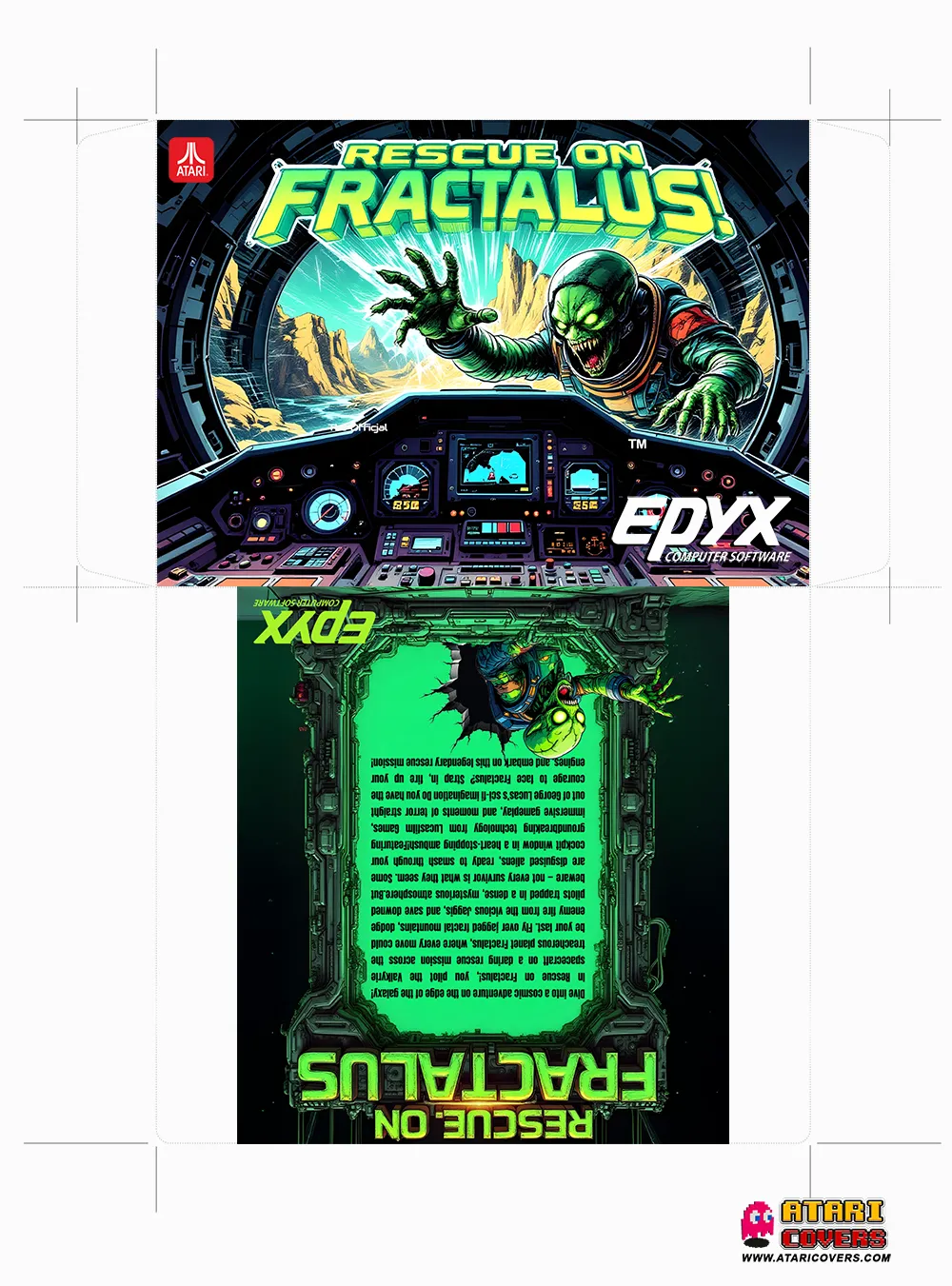
About Us

Ataricovers.com is a website dedicated to fans of classic Atari games. Our mission is to design new covers for old games, as well as to collect and share high-quality manuals and promotional materials related to Atari titles. Driven by passion and community involvement, we are building a unique archive that helps preserve and reimagine the legacy of this iconic brand for current and future generations of gamers.

